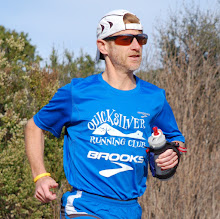After 6 weeks of running in circles in my mind, figuratively speaking, and obsessing about the likelihood of my ability to run again, I was quite anxious for this peek view inside this critical articulation. Per my previous post, I was fearing that my meniscus was shattered beyond potential repair. Walking still hurts and I can even feel pain in certain positions while sleeping.
Bottom line, it's not straightforward, there is both good and bad news, but it looks like I could still have a few strides left, which I had really doubted about.
The good news first, starting with what my Sports Medicine doctor felt was the most important: there is no trace or arthritis, the cartilage looks healthy, there is that after logging 2.5 rounds around the globe (101,048 km or 62,783 miles). The health of my knees was part of the top questions I was getting from people doubting that so much running was any good for our bodies and, so far, I was telling them that healthy cartilage actually meant to regenerate the more you used it. Part of the theory that, as humans, we were... born to run. I was also adding that, for that mechanism to hold, it did help to have a neutral footing and stride, to preserve joint alignment. Well, jumping diagonally over a puddle might have tested this alignment beyond my limits...
The second good news is that the ligaments are mostly intact. That MRI shot in particular shows that cruciate ligament well straighten through the articulation.
On another image though, my doctor saw some indication that the attach might have suffered. The MRI didn't have enough images to tell for sure though.
Going on with the less good news is that there is synovial effusion but it is limited. At least this explains the loss of full flexion which prevents me from sitting on my heel for instance. This should pass and reduce eventually as the inflammation disappears. I think that effusion corresponds to that white area, as I recall from my appointment.
And now to the more serious issues which, at least, explain the persisting pain. Let's start with the most obvious culprit, not visible on the x-rays but clearly on the MRI: two bone edemas, one at the top of the tibia, one at the bottom of the femur, proving that both bones did touch, yikes! The x-rays show a silverline though, no fracture at least. For my doctor, this could have easily happened given what the compression must have been. Phew!
And, with compression comes the worst news: while the interior meniscus definitely shows some tear/degeneration after 25 years of intensive running, it was still highly functional in its shock absorber role. Yet, that huge pinch between the displaced bones created a fissure, as I could guess from browsing the Internet and alluded to in my previous post. Because of the very limited number of images of the MRI, the presence of a fissure could be confirmed but the size of it not established.
The meniscus is fibrocartilaginous so it can't repair itself. It's not vascularized and there are no nerves so the fissure itself can't be a source of pain. Yet, the mechanical rupture could prevent the knee from functioning properly, hence be painful. But we'll know if that's the case only after the bone edemas heal. Which should take a few more weeks.
Meanwhile, no impact which makes it a challenging for me to do cardio training as I don't particularly enjoy going to the gym and even less so in group class formats.
And that's it for now. Some hope but more patience needed, and even more so as healing slows down with age. That part of aging which sucks... For so many years, I didn't want to believe others saying it, at least you've been warned! ;-)









.jpg )
